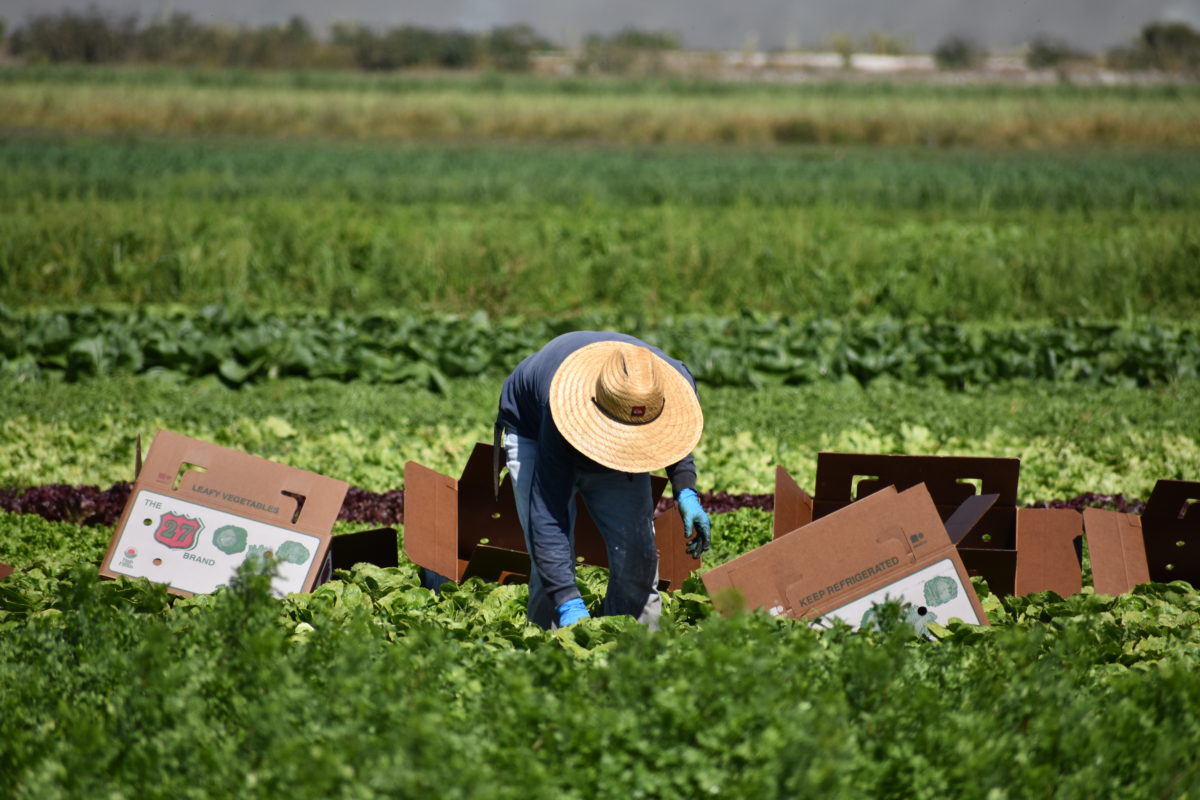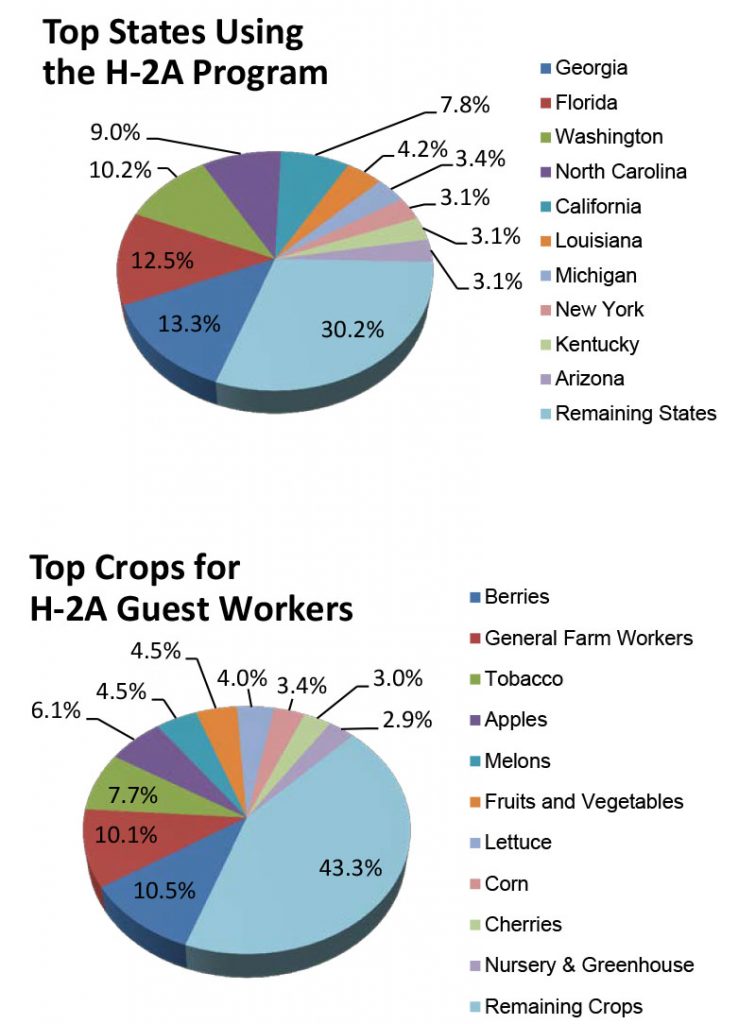By Amy Wolfe
Growers across the United States, and the Southeast in particular, are once again challenged to find stable, consistent and quality sources of labor. Long dependent upon the H-2A guest worker visa program, growers continue to rely heavily on their knowledge and effective use of the only viable, legal mechanism for securing foreign labor.
Trends show, however, that others across the country have also become more dependent on the H-2A program. This, in combination with no meaningful immigration reform legislation currently under consideration by Congress, means the labor market may continue to struggle for the foreseeable future.
INCREASED H-2A USE
Over the past two years, agricultural employers in two Southeastern states dominated use of the H-2A guest worker visa program. According to the U.S. Department of Labor, Office of Foreign Labor Certification, Florida and Georgia have maintained the top two positions, alternating which state leads the nation each year. Georgia growers used 13.3 percent of all H-2A workers in 2018. Florida led with 12.6 percent of the guest workers used in 2017. Rounding out usage in the Southeast was North Carolina, in the number-four spot in 2018 and in the number-three spot in 2017.
Figures for the first two quarters of 2019 indicate that all three states will again be dominant users of H-2A. Growers in California and Michigan — large agricultural states in their own right — have begun to meaningfully leverage the program as well. Total visa applications submitted increased 16.7 percent in 2018 over 2017 and 14.9 percent in 2017 over 2016. This combined growth of nearly 32 percent speaks directly to the difficulty growers nationwide face in finding workers and their shift toward H-2A guest workers as the only viable alternative.
Increased use of the H-2A program does raise the question of how the complicated, costly and overly bureaucratic system will manage with even more applicants. The larger volume has also run afoul of the administration’s increased presence at the U.S./Mexico border.
The 2018 fiscal year saw significant increases in the time needed to process guest workers’ visas in country. That led to more days waiting, which translates into increased costs for growers as they compensate guest workers for their time and accommodations during the processing period. These impacts have added fuel to the already blazing fire of frustration by growers who need comprehensive immigration reform.
POLITICAL IMPACT AND WHAT’S NEXT
The transition of power within the House of Representatives at the start of 2019 all but ensured that comprehensive immigration reform that best meets the needs of the agriculture industry is nearly impossible. Seeing that inevitably playing out, last year a cross-section of federal agencies — the U.S. Department of Labor (USDOL), Department of Agriculture, Department of Homeland Security and Department of State — announced a collaborative commitment to streamline and modernize the H-2A visa application process.
In October 2018, the first step in upholding that commitment came in the form of proposed rule changes to both the application form and one of the application appendixes. Many of the changes eliminated requests for duplicate information and allowed for electronic submission. Another change recommended addresses the need for modernization in allowing recruitment efforts via digital platforms. The current regulations require a specific formula of advertising in print newspapers. Agricultural advocates have long argued that this method is unnecessarily costly and woefully out-of-date.
Vested stakeholders had until mid-December 2018 to provide input on the value of these proposed changes. In February 2019, Keith Sonderling, deputy administrator for the USDOL Wage and Hour Division, shared at the AgSafe annual conference that the agencies were working through the comments submitted. He anticipated an announcement of the final changes by mid-2019. Sonderling also noted that he and his counterparts at the other three agencies were very committed to making the H-2A program much more accessible, and these were the first of many improvements that growers can expect to see.
In the end, it’s realistic to expect 2019 to feel much like 2018 in terms of continued shortages of accessible domestic labor when navigating the H-2A guest worker program. While relief appears to be in sight, it is incremental and administrative in nature. Until congressional and administrative leadership can create changes to immigration that address the vast cross-section of issues that currently exist, agriculture can expect labor difficulties to remain.
Amy Wolfe is president and CEO of AgSafe, headquartered in Modesto, California. AgSafe is a 501c3 nonprofit providing training, education, outreach and tools in the areas of worker safety, human resources, labor relations, pesticide safety, and food safety for the food and farming industries. For more information, visit www.agsafe.org, call 209-526-4400 or email safeinfo@agsafe.org.
This article was featured in the July issue of VSCNews magazine. To receive future issues of VSCNews magazine, click here.
Share this Post











